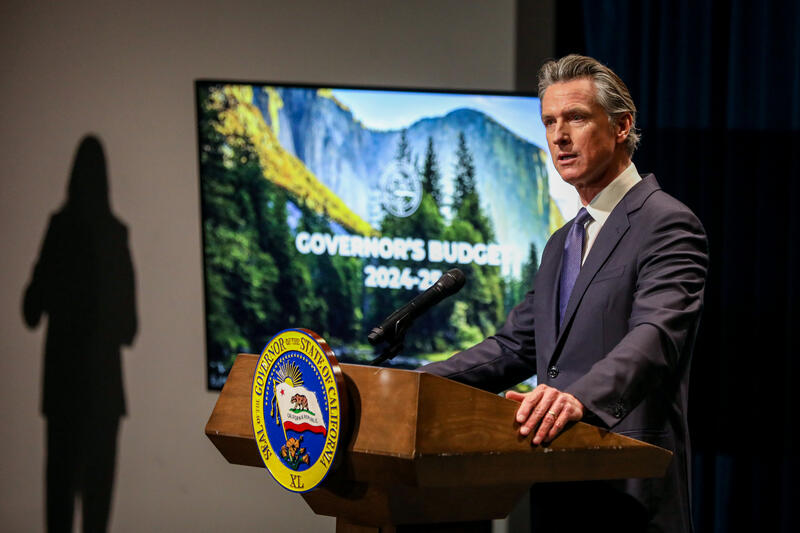During this summer, a team of students from MIT embarked on a journey to the sou …
Newsom proposes ambitious $8 billion plan to avoid school cuts, but faces resistance
Carlos Changemaker

Gov. Gavin Newsom raised the hopes of school district and community college educators this month by promising to protect schools and colleges from budget cuts and honor future spending commitments, despite a significant decline in state revenue over the past three years.
However, educators should hold off on celebrating until June, when the Legislature passes the 2024-25 budget.
In its analysis of the state budget, the nonpartisan Legislative Analyst’s Office (LAO) expressed concerns about how Newsom plans to address the $8 billion revenue shortfall facing schools and community colleges.
Furthermore, the LAO advised legislators to start planning for education spending beyond 2024-25, as flat or declining revenues are expected to create financial challenges. These challenges may force difficult choices between funding ongoing expenses and sustaining important programs for low-income students, teacher training, and addressing post-pandemic learning setbacks.
“The state faces significant operating deficits in the coming years, which are the result of lower revenue estimates, as well as increased cost pressures,” the analyst stated.
Despite Newsom’s promise to protect schools and community colleges, the strategy for addressing the $8 billion remains unclear.
Newsom projects a $14.3 billion revenue shortfall over three years, covering the budget years of 2022-23, 2023-24, and the upcoming year. These projections are based on Proposition 98, which determines the percentage of the state’s general fund allocated to schools and community colleges (about 40%).
However, past revenue projections often differ from actual revenue. This uncertainty, compounded by a six-month delay in tax return filings for 2022, made it challenging for budget analysts to calculate the 2023-24 budget.
Newsom’s proposed solution includes diverting $5.7 billion from the Proposition 98 rainy day fund to address the current year’s deficit and sustain a flat budget for 2024-25. However, draining the rainy day fund requires legislative approval.
The remaining $8 billion represents the revenue shortfall from 2022-23, resulting from overpayment beyond the minimum Proposition 98 funding guarantee. The decline in revenue primarily stems from income tax receipts from the top 1% of earners.
Some school districts have already spent funding from 2022–23, including negotiated staff pay raises. Deducting this overpayment from the current and future budgets would have severe consequences for students and staff.
As an alternative, Newsom proposes finding reductions from the non-Proposition 98 side of the general fund, which covers non-education expenses such as higher education, childcare, and climate change programs.
There is relief that the money allocated to school districts in previous budgets will not be “clawed back.”
Newsom’s challenge will be making districts and community colleges financially stable without increasing the minimum Proposition 98 guarantee. Raising Proposition 98 could create future obligations and potential deficits after 2024-25.
The details of Newsom’s strategy are undisclosed, with his budget summary only mentioning “statutory changes” to address the $8 billion decrease and avoid impacting existing school district and community college budgets.
According to the LAO and School Services, these changes may involve spreading the payments over five years, starting in 2025-26.
However, questions remain regarding the state’s use of revenue that won’t be collected for several years to address the current funding shortfall.
The legal and political implications of these proposals will be revealed in the statutory language to be released in the coming weeks.
Newsom’s proposals include accounting maneuvers that would delay payments for programs and some state salaries until early 2025-26. These measures will help balance the budget for 2024-25 but compound the state’s financial challenges in the following years.
Both the LAO and Newsom’s administration project general fund deficits averaging $30 billion annually in the three years after 2024-25.
The LAO has suggested alternative options for resolving the 2022-23 deficit, including utilizing remaining funds from the Proposition 98 reserve and looking for reductions in unallocated one-time funding.
Despite potential budget cuts, many school districts and charter schools may face their own deficits due to declining enrollments and inadequate cost-of-living adjustments. The projected cost-of-living adjustment for next year is only 0.76%, the lowest increase in 40 years.
Ultimately, while school districts hope to be spared cuts, they will need to find alternative solutions outside of Proposition 98 to make up for potential funding shortfalls.


